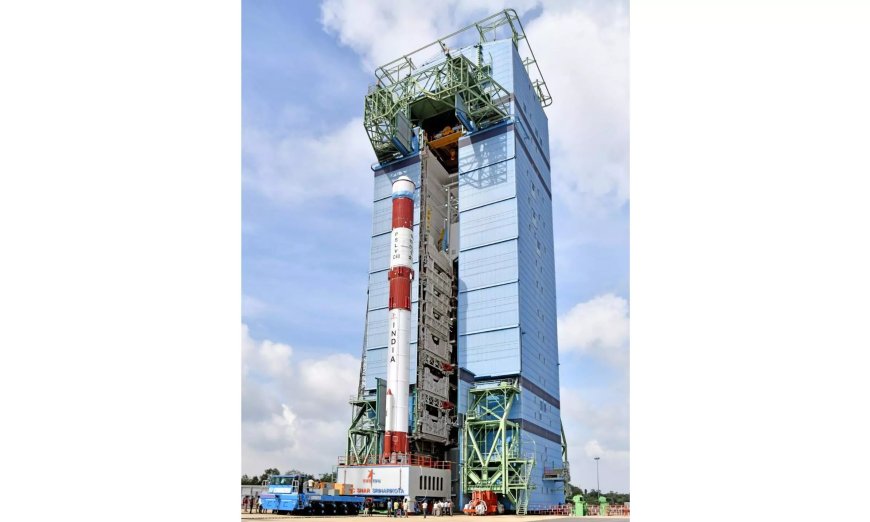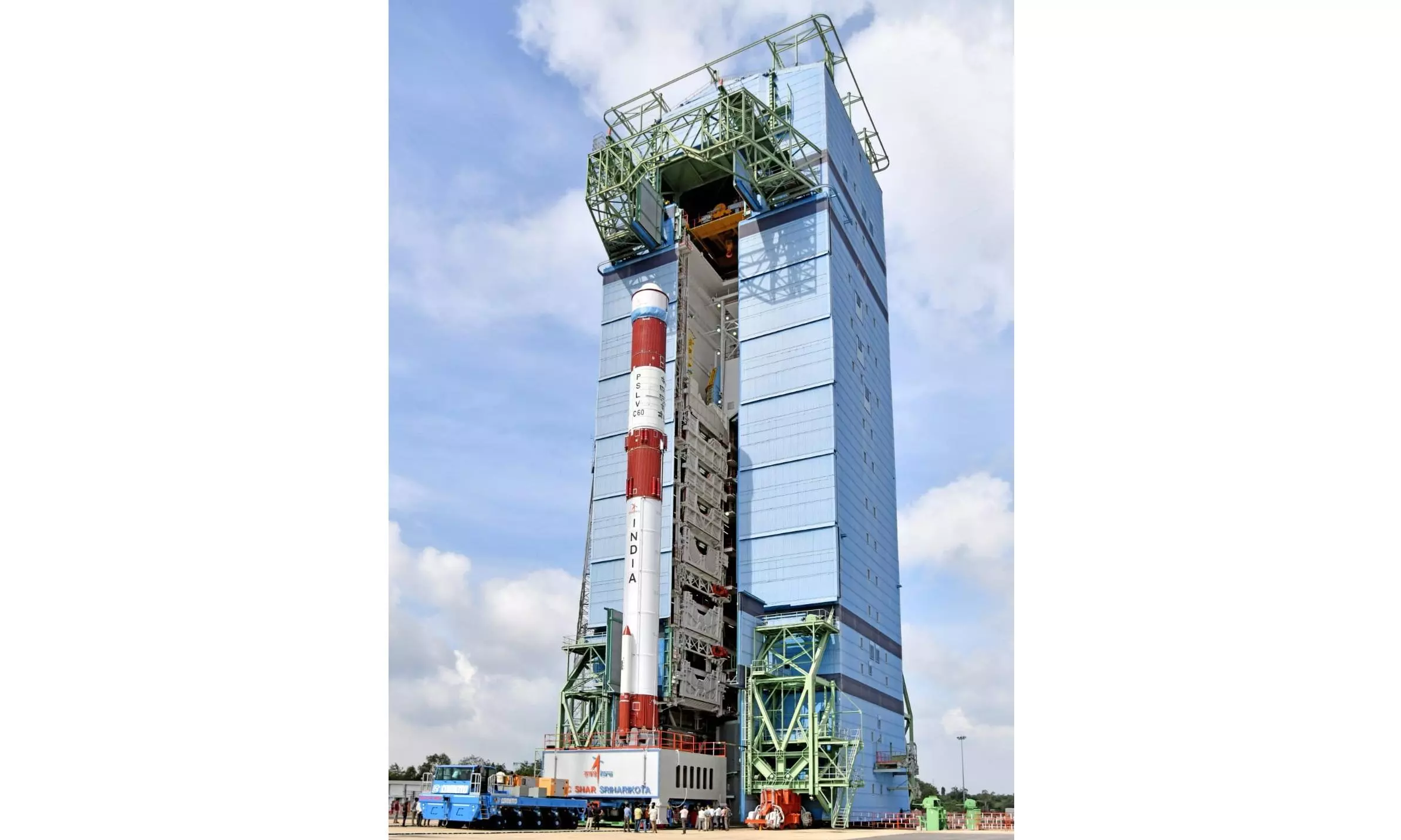ISRO to Launch SpaDeX on Monday; Part of India’s Ambitious Space Station Goal
Tirupati: In a step toward establishing India’s space station and launching interplanetary missions, the Indian Space Research Organisation (ISRO) will launch its Space Docking Experiment – SpaDeX – on December 30 at 9:58 PM from the Satish Dhawan Space Centre in Sriharikota using the PSLV-C60 rocket. This will make India the fourth nation on Planet Earth to master space docking technology. The SpaDeX mission is a technology demonstrator, aimed at showcasing in-space docking using two small spacecraft. This technology is pivotal for India’s space ambitions, including future lunar sample return missions, constructing the Bharatiya Antariksh Station (BAS) and other interplanetary ventures. The mission’s primary goal is to develop and demonstrate the technology needed for rendezvous, docking and undocking of two spacecraft (SDX01, which is the Chaser, and SDX02, the Target) in a Low-Earth orbit. Secondary objectives include showcasing electric power transfer between docked spacecraft, enabling advanced applications like in-space robotics, composite spacecraft control, and payload operations post-undocking. The spacecraft are designed to operate for up to two years. Indigenous technologies developed for this mission include a docking mechanism, a suite of advanced rendezvous sensors, inter-satellite communication links, and a novel autonomous docking strategy. Precision navigation is ensured through GNSS-based Relative Orbit Determination and Propagation (RODP), supported by VHF / UHF transceivers for real-time data exchange. Extensive hardware and software tests, including closed-loop verifications, characterised RODP performance. Up to an inter-satellite distance (ISD) of 5 km, standard ISRO LEO orbit maintenance and attitude control algorithms are employed. For closer distances, n-Pulse, Glideslope, and PV guidance algorithms execute the V-bar strategy to reduce ISD, evaluate sensors and software, and achieve docking. These algorithms have been developed into software and validated through simulations, including digital, hardware-in-loop, onboard-in-loop, software-in-loop, and robotic setups. The docking mechanism employs a low-impact, androgynous design, similar to international standards but scaled for smaller spacecraft. Payloads aboard the spacecraft include a High-Resolution Camera for surveillance, a Miniature Multi-Spectral Payload for natural resource monitoring, and a Radiation Monitor to study space radiation. These systems not only support the mission but also serve broader scientific and operational objectives. Key Highlights: SpaDeX will carry a high-resolution camera, a multi-spectral payload for resource monitoring, and a radiation monitor, which will help in space science studies and human spaceflight applications. Due to the small size and mass of the spacecraft, the mission requires fine precision for docking, presenting a more challenging scenario compared to larger spacecraft docking. Primary objectives include demonstrating rendezvous and docking technology, while secondary objectives involve power transfer between spacecraft and validating the mission’s autonomous operational systems. Success of SpaDeX will pave the way for India’s future lunar missions, such as Chandrayaan-4, Bharatiya Antariksh Station and other interplanetary explorations. During its orbital phase, SpaDeX will be controlled by ISRO’s ISTRAC ground stations and other external stations.


Tirupati: In a step toward establishing India’s space station and launching interplanetary missions, the Indian Space Research Organisation (ISRO) will launch its Space Docking Experiment – SpaDeX – on December 30 at 9:58 PM from the Satish Dhawan Space Centre in Sriharikota using the PSLV-C60 rocket.
This will make India the fourth nation on Planet Earth to master space docking technology.
The SpaDeX mission is a technology demonstrator, aimed at showcasing in-space docking using two small spacecraft. This technology is pivotal for India’s space ambitions, including future lunar sample return missions, constructing the Bharatiya Antariksh Station (BAS) and other interplanetary ventures.
The mission’s primary goal is to develop and demonstrate the technology needed for rendezvous, docking and undocking of two spacecraft (SDX01, which is the Chaser, and SDX02, the Target) in a Low-Earth orbit. Secondary objectives include showcasing electric power transfer between docked spacecraft, enabling advanced applications like in-space robotics, composite spacecraft control, and payload operations post-undocking.
The spacecraft are designed to operate for up to two years.
Indigenous technologies developed for this mission include a docking mechanism, a suite of advanced rendezvous sensors, inter-satellite communication links, and a novel autonomous docking strategy. Precision navigation is ensured through GNSS-based Relative Orbit Determination and Propagation (RODP), supported by VHF / UHF transceivers for real-time data exchange.
Extensive hardware and software tests, including closed-loop verifications, characterised RODP performance. Up to an inter-satellite distance (ISD) of 5 km, standard ISRO LEO orbit maintenance and attitude control algorithms are employed. For closer distances, n-Pulse, Glideslope, and PV guidance algorithms execute the V-bar strategy to reduce ISD, evaluate sensors and software, and achieve docking.
These algorithms have been developed into software and validated through simulations, including digital, hardware-in-loop, onboard-in-loop, software-in-loop, and robotic setups.
The docking mechanism employs a low-impact, androgynous design, similar to international standards but scaled for smaller spacecraft.
Payloads aboard the spacecraft include a High-Resolution Camera for surveillance, a Miniature Multi-Spectral Payload for natural resource monitoring, and a Radiation Monitor to study space radiation. These systems not only support the mission but also serve broader scientific and operational objectives.
Key Highlights:
SpaDeX will carry a high-resolution camera, a multi-spectral payload for resource monitoring, and a radiation monitor, which will help in space science studies and human spaceflight applications.
Due to the small size and mass of the spacecraft, the mission requires fine precision for docking, presenting a more challenging scenario compared to larger spacecraft docking.
Primary objectives include demonstrating rendezvous and docking technology, while secondary objectives involve power transfer between spacecraft and validating the mission’s autonomous operational systems.
Success of SpaDeX will pave the way for India’s future lunar missions, such as Chandrayaan-4, Bharatiya Antariksh Station and other interplanetary explorations.
During its orbital phase, SpaDeX will be controlled by ISRO’s ISTRAC ground stations and other external stations.






































